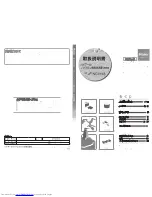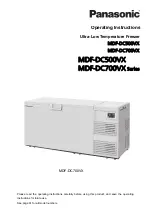
44
Defrosting
Bleeding part of the moisture of cooling chamber in
form of frost and ice goes with the operation of the
appliance.
Thick frost and ice has an insulating effect, so it
reduces cooling efficiency as the temperature
increases and needs more energy.
After removing the freezing shelf it is possible to
scrape off and remove smaller frost and ice with the
enclosed ice scraper.
The tray in figure is not a piece of accessories to the
appliance!
When ice coating is so thick that it can not be removed
with the frost scraper defrosting is necessary. Its
frequency depends on usage.
How to defrost it:
4-5 hours before starting defrosting turn the
thermostatic control knob to "SUPER" position so that
the stored foods can refrigerate well.
Break the circuit of the appliance.
Take the frozen foods out of the appliance and put
them into a basket lined with paper or cloth. Store
them in a possibly cool place or replace them into a
frozen or fresh food compartment of a refrigerator.
Leave the door open.
Sweep off melting water, which gathers in the outlet
channel practically formed in the bottom of the
appliance, occasionally with a cloth or sponge in
direction of sides. It can be removed if you put an
adequately high tray in front of the appliance, which
defrost water will flow into.
Defrosting process can be made quicker by placing a
pot or dish filled with warm water to the freezing shelf.
After defrosting wipe the wet surfaces.
Apply voltage to the appliance.
Put the foods back.
Regular cleaning
It is practical to clean the inside of the freezer and
defrost it at a time.
Household cleaner or soap must not be used.
After breaking the circuit wash the appliance using
lukewarm water and wipe it.
Clean the door gasket with clean water.
After cleaning apply voltage to the appliance.
It is recommended to remove the dust and dirt
collected on the back of the appliance and the
condenser once or twice a year.
Maintenance
GB
































